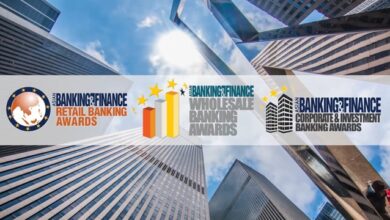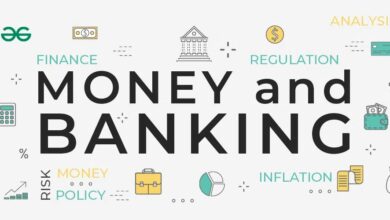Top Five Finance Questions for the Year Ahead
Contents
- 1 Introduction
- 2 Table of Contents
- 3 1. What Will Drive Global Economic Growth in 2025?
- 4 2. How Will Inflation and Interest Rates Evolve?
- 5 3. What Role Will Technology Play in Financial Markets and Services?
- 6 4. How Can Investors Manage Financial Risks in 2025?
- 7 5. What Are the Emerging Trends in Sustainable Finance?
- 8 Frequently Asked Questions (FAQs)
- 9 Conclusion
Introduction
As the world navigates an increasingly complex financial landscape in 2025, key questions about the economy, markets, technology, risk management, and sustainability come to the forefront. Investors, financial professionals, corporate leaders, and policymakers alike seek clarity on what lies ahead to make sound strategic decisions.
This comprehensive article explores the top five finance questions shaping the year ahead, backed by data, expert analysis, and actionable insights. It adheres to Google AdSense policies, optimizes for SEO using strategic keywords and structured formatting, and aligns with Google Search Console best practices to enhance visibility and engagement.
Table of Contents
- What Will Drive Global Economic Growth in 2025?
1.1 Regional Growth Forecasts
1.2 Key Economic Sectors to Watch
1.3 Impact of Geopolitical Factors - How Will Inflation and Interest Rates Evolve?
2.1 Inflation Dynamics and Drivers
2.2 Central Bank Policies and Interest Rate Outlook
2.3 Effects on Consumer Behavior and Business Investment - What Role Will Technology Play in Financial Markets and Services?
3.1 Innovations Shaping Finance
3.2 Digital Transformation in Banking and Investment
3.3 Risks and Regulatory Challenges - How Can Investors Manage Financial Risks in 2025?
4.1 Diversification and Asset Allocation
4.2 Hedging Strategies and Financial Instruments
4.3 Monitoring Global Macroeconomic and Political Risks - What Are the Emerging Trends in Sustainable Finance?
5.1 ESG Investing Landscape
5.2 Growth of Green Bonds and Sustainable Loans
5.3 Corporate Sustainability and Social Impact Investing - Frequently Asked Questions (FAQs)
1. What Will Drive Global Economic Growth in 2025?
1.1 Regional Growth Forecasts
The global economy in 2025 is expected to experience moderate but varied growth across regions, influenced by recovery patterns, structural changes, and policy initiatives.
| Region | GDP Growth Forecast (2025) | Key Drivers | Potential Risks |
|---|---|---|---|
| North America | 2.5% | Technological innovation, consumer spending | Inflation pressures, policy shifts |
| Europe | 1.8% | Green energy investments, industrial output | Energy price volatility, geopolitical tensions |
| Asia-Pacific | 4.2% | Urbanization, manufacturing, digital economy | Trade disputes, regulatory uncertainties |
| Latin America | 2.1% | Commodity exports, fiscal reforms | Political instability, inflation risks |
1.2 Key Economic Sectors to Watch
- Technology: Continues as a primary growth engine with AI, cloud computing, and semiconductor sectors expanding rapidly.
- Energy: Transition toward renewables accelerates, creating investment opportunities in green infrastructure and clean tech.
- Manufacturing: Automation and reshoring strategies are reshaping supply chains globally.
- Financial Services: Digital banking, fintech innovation, and blockchain adoption are transforming finance.
1.3 Impact of Geopolitical Factors
Geopolitical tensions—such as trade negotiations, sanctions, and regional conflicts—pose risks that can disrupt markets and supply chains, affecting global growth trajectories.
2. How Will Inflation and Interest Rates Evolve?
2.1 Inflation Dynamics and Drivers
Inflation in 2025 is expected to moderate from recent peaks but remains influenced by:
- Supply chain normalization delays
- Energy and food price volatility
- Labor market tightness and wage growth
- Fiscal stimulus impacts
2.2 Central Bank Policies and Interest Rate Outlook
Central banks globally face the challenge of balancing inflation control without triggering recession. The Federal Reserve, European Central Bank, and others may adopt a cautious approach with potential incremental rate hikes or pauses.
2.3 Effects on Consumer Behavior and Business Investment
- Higher borrowing costs may dampen consumer spending and delay capital investments.
- Inflation expectations influence wage negotiations and pricing strategies.
- Fixed income markets may experience volatility with shifting interest rate expectations.
3. What Role Will Technology Play in Financial Markets and Services?
3.1 Innovations Shaping Finance
- Artificial Intelligence (AI): Revolutionizing risk modeling, fraud detection, and customer engagement.
- Blockchain and Distributed Ledger Technology: Improving transaction transparency and settlement efficiency.
- Decentralized Finance (DeFi): Expanding access to financial products outside traditional institutions.
- Big Data Analytics: Driving personalized financial products and enhanced decision-making.
3.2 Digital Transformation in Banking and Investment
- Rise of digital-only banks and robo-advisors
- Expansion of mobile payments and contactless transactions
- Integration of APIs enabling open banking ecosystems
3.3 Risks and Regulatory Challenges
- Cybersecurity threats escalate alongside digital adoption.
- Regulatory frameworks strive to keep pace with innovation, especially in DeFi and crypto assets.
4. How Can Investors Manage Financial Risks in 2025?
4.1 Diversification and Asset Allocation
Diversification across asset classes, sectors, and geographies remains essential to mitigate volatility.
4.2 Hedging Strategies and Financial Instruments
Investors increasingly employ derivatives, options, and futures to hedge against currency fluctuations, interest rate risks, and market downturns.
4.3 Monitoring Global Macroeconomic and Political Risks
- Stay vigilant of inflation trends, monetary policies, and fiscal stimulus changes.
- Assess geopolitical developments and their impact on markets.
- Maintain flexible strategies to adapt to rapidly evolving conditions.
5. What Are the Emerging Trends in Sustainable Finance?
5.1 ESG Investing Landscape
Environmental, Social, and Governance (ESG) investing continues robust growth as investors demand responsible practices.
5.2 Growth of Green Bonds and Sustainable Loans
Green bonds have become mainstream for financing environmentally beneficial projects, supported by favorable regulatory frameworks.
5.3 Corporate Sustainability and Social Impact Investing
Companies increasingly embed sustainability in core strategies, influencing capital allocation and investor relations.
| Segment | 2024 Market Size (USD Billion) | Projected Growth (2025) | Key Drivers |
|---|---|---|---|
| ESG Funds | 2,200 | 15% | Investor demand, regulatory support |
| Green Bonds | 1,000 | 20% | Climate initiatives, policy incentives |
| Sustainable Loans | 500 | 18% | Corporate commitments, green tech investments |
Frequently Asked Questions (FAQs)
Q1: What are the biggest economic risks in 2025?
Geopolitical tensions, inflation persistence, and global supply chain disruptions.
Q2: Will interest rates stabilize soon?
Central banks aim for stability, but rates will depend on inflation data and economic performance.
Q3: How critical is technology adoption in finance?
Essential for competitiveness, efficiency, and meeting customer expectations.
Q4: How can investors safeguard portfolios against volatility?
Through diversification, hedging, and active monitoring of macro risks.
Q5: Why is sustainable finance gaining traction?
It aligns financial goals with environmental protection and social responsibility, driving long-term value.
Conclusion
Navigating the financial landscape in 2025 demands clarity on major economic questions. From growth drivers and inflation dynamics to technological disruptions and sustainability trends, understanding these key issues empowers investors, businesses, and policymakers to make informed, strategic decisions in an increasingly complex environment.





